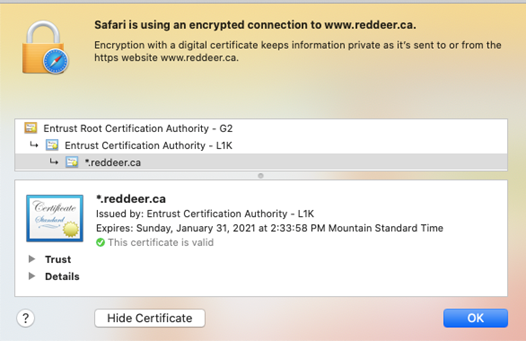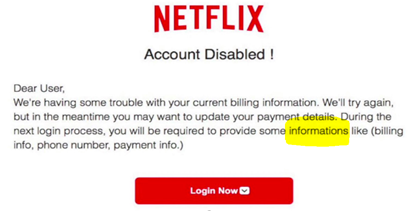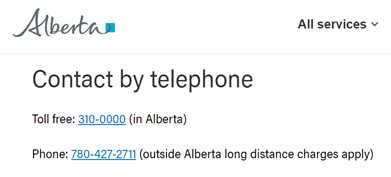Protect yourself from online scams
May 27, 2020
The COVID-19 pandemic has forced many things… online.

We’re holding meetings, buying groceries, and staying in touch with friends and family, all with the tap of a keyboard or smartphone screen. Not to mention all the things we were doing online before anyone even knew the term ‘coronavirus’, like paying bills, watching movies and of course, shopping. In this age of convenience, there aren’t many things you can’t do with the click of a mouse. But, that convenience comes with some trade-offs, particularly when it comes to your credit card number or personal information and those who would like to exploit it. More people shopping, chatting and spending time online means more targets for potential scammers, and unless you’re aware of the methods and tactics used by thieves to steal your money or identity, it’s easy to become a victim.
“We’ve been noticing a definite uptick in complaints about fraudulent websites and online scams recently, especially those targeting seniors,” says Cst. Dorian Tooze of the Red Deer RCMP. “Many of these websites look legitimate at first glance, so internet users should know and be aware of some of the subtleties to watch out for.”
In this article we’ll take a look at a few of the things you should look for on any website, before punching in your credit card number or listing your personal information. So, open up your internet browser (Explorer, Safari and Chrome are popular ones) and let’s get started.
1. We’ll begin right at the top, in the address bar. For those who live in Alberta, most of the website addresses we visit either end in .ca (Canada) or .com (United States). If the website ends in something other than those, there’s a good chance the domain is not based in North America. There are some exceptions like .gov (government websites) and .org (often associated with non-profits), but as a rule, if it’s not .ca or .com, it’s probably based overseas. That’s certainly not to say that all scam websites originate overseas or that all .ca or .com sites are legitimate.

2. Next, check to see if the website address starts with http:// or https://. The “S” at the end stands for “secure”, and if it is not present in the website address, it means the site is not encrypted. Avoid giving out personal information (credit card/banking numbers, social insurance number, name, address, etc.) on non-encrypted sites, as it is more likely to fall into the wrong hands.

3. Look for authentic security logos and be aware of fake ones. If a website shows a security certification, click on the logo. (It could be a lock, a shield, or a similar logo). If the certification is valid, clicking the logo will often open a new tab with details about the website’s security.


4. Watch for poor grammar and spelling mistakes. These can be trickier to spot, but often English is not the first language of overseas scammers and their grasp of the language may be lacking. In this example, a major corporation like Netflix would likely not make a typo like “informations”.

5. If you’re shopping online or doing any activity that requires you to provide your banking/credit card details, look for secure payment options. If a website requests payment by bitcoin or any other unsecured and non-refundable form of payment, it’s a good indicator that it is not a legitimate site.

6. Don’t be swayed by deals that seem too good to be true. If it seems that way, it probably is. “A legitimate business will not be selling a new computer or a travel getaway for 80% off the regular price,” warns Cst. Tooze. “Often these types of advertisements are used to lure potential victims, so the scammers can obtain their banking information.”

7. Any legitimate website you visit should have a phone number listed or another way of contacting a representative of the company or organization. “Call that number and ask to speak with someone,” says Cst. Tooze. “Many scam sites I’ve investigated have no phone number listed, or the phone number is not in service when you try to call it.”

8. If you’re concerned about the legitimacy of a website, a quick web search should turn up reviews of the site from people who have used it previously. This will help you gauge whether or not it’s safe to use. You can also research the reputation of a company by searching the Better Business Bureau.
9. Most importantly, always protect your personal information. Never give out your social insurance number online and do your research before using your credit card or giving out banking information.
If you become a victim of online fraud, be sure to report it to the RCMP and the Canadian Anti-Fraud Centre immediately.
“Often people are scared or embarrassed to admit that they fell for a scam or got caught up in fraudulent activity, and they don’t report it to the authorities, or they wait a significant period of time before reporting it,” says Cst. Tooze. “We’re not here to judge and no one is going to make you feel bad for becoming a victim of crime. But the sooner it’s reported, the better chance you have of recouping some of your lost money, and the sooner we can educate others, so they can avoid becoming a victim of the same scam.”
The Canadian Anti-Fraud Centre is a federal government organization that keeps track of all the scams and frauds currently making the rounds in Canada, whether online, by phone, through the mail, or in person. It is a great resource for Canadians and it’s worth checking back often for the latest information. Check out the Canadian Anti-Fraud Centre website.